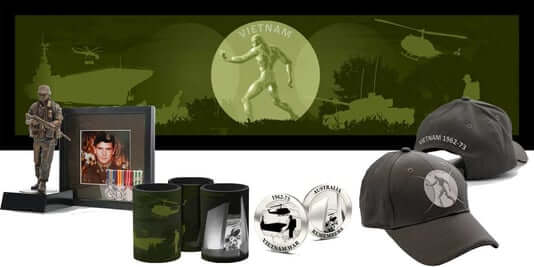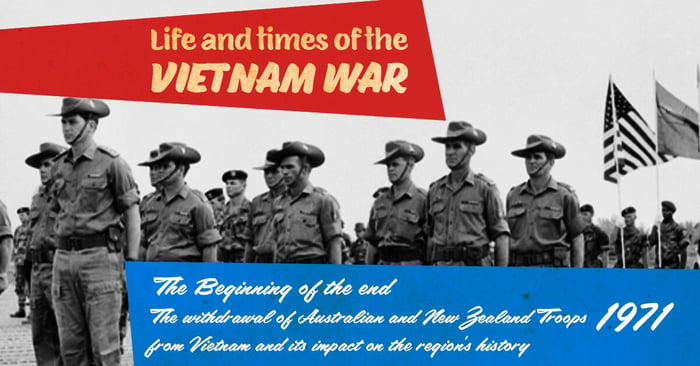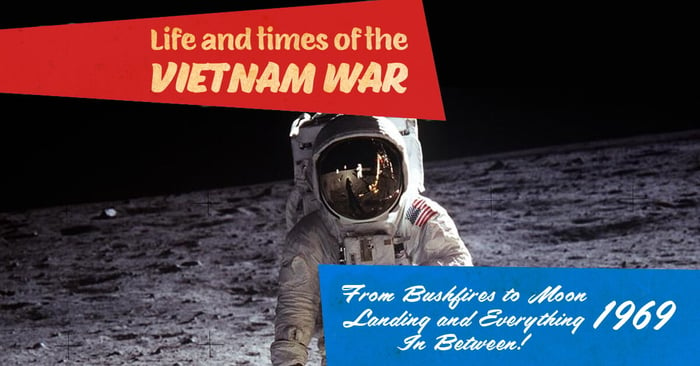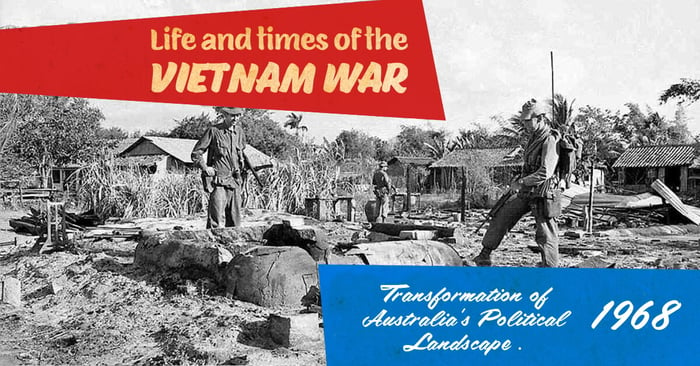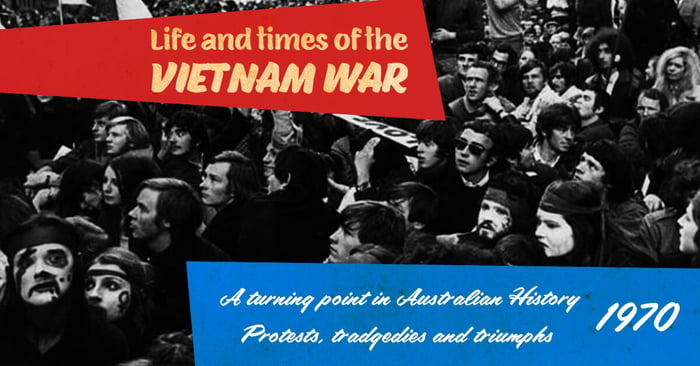
1970: A Turning Point in Australian History – Protests, Tragedies and Triumphs
1970: a year of momentous occurrences in Australia, ranging from political declarations about the Vietnam War to the arrival of US Vice-President Spiro Agnew, ensuing protests, and the calamity that befell Melbourne's West Gate Bridge. Concurrently, the inauguration of Sydney Airport's new international terminal signified a considerable improvement. Nevertheless, the epoch's defining moments were the anti-Vietnam War demonstrations, marking a turning point in Australian chronicles and showcasing escalating opposition to the war. In this composition, we shall explore Australia's noteworthy 1970 events, encompassing declarations made by Army Minister Andrew Peacock, Vice-President Spiro Agnew's arrival, and the protests during his sojourn.
Life & Times
Throughout 1970, Australia's administration backed the United States in the Vietnam War. On 8 January, Army Minister Andrew Peacock refuted a statement by senior Labor figure Jim Cairns. Cairns claimed Australian officers in Vietnam had insinuated to troops that they would return home by June. Peacock avowed that no such assurance had been given to the soldiers. In February, Peacock would convene with Military Advisers of the Australian Army Training Team Vietnam (AATTV) at Australia House, Headquarters AATTV in Quang Nam Province, Vietnam, embarking on a six-day excursion.
On 13 January, E.G. Whitlam, the Federal Opposition's leader, and his deputy, L.H. Barnard, encountered US Vice-President Spiro Agnew in Canberra. They deliberated on various subjects, including economic aid for Southeast Asia, the Nuclear Non-proliferation Treaty, and China. Nevertheless, they abstained from discussing American bases in Asia or Australia. For the first time during his three-day Canberra visit, Agnew drove without his bulletproof Cadillac's protection, departing his hotel for RAAF Base Fairburn to board Air Force 2. Fourteen demonstrators were apprehended outside Parliament House during Agnew's solitary full day in Australia.
On 15 January 1970, the Canberra constabulary scrutinised potentially hazardous chemicals thrown into the Prime Minister's Lodge swimming pool. The chemicals seemed to corrode the pool's tiled walls, which Prime Minister Gorton swam in each morning. While nobody sustained injuries, the occurrence heightened concerns about the Prime Minister's security and residence.
On 22 April 1970, the Prime Minister disclosed that the 8th Battalion, The Royal Australian Regiment (8 RAR), would receive replacements after the year's end. Some support components would be withdrawn from South Vietnam. However, around 120 soldiers would augment the AATTV's size. This verdict denoted a pivotal transition in Australia's Vietnam War participation, veering from an active combat position, employing Australian soldiers to bolster the Army of the Republic of Vietnam, towards Australia's initial military advising involvement.

Inauguration of the new Terminal 1 at Sydney Airport
On 3 May 1970, Queen Elizabeth II inaugurated a novel international terminal at Sydney Airport. Pan Am's Clipper Flying Cloud, the first Boeing 747 "Jumbo Jet," alighted at the airport on 4 October. Throughout the 1970s, the north-south runway extended to become one of the southern hemisphere's lengthiest runways, whilst the east-west runway remained 2,500m (8,300ft) long. This state-of-the-art facility denoted a substantial upgrade to the airport and a significant development for international travel to and from Australia.
On 8 May, the first moratorium marches opposing the Vietnam War transpired in Australian metropolises. Approximately 70,000 individuals marched in Melbourne, and around 120,000 marched across Australia. These processions initiated a new protest phase against the Vietnam War.
On 18 September 1970, an estimated 100,000 individuals participated in a subsequent moratorium march. The rally to contest Australia's engagement in the Vietnam War underscored the public's burgeoning opposition.
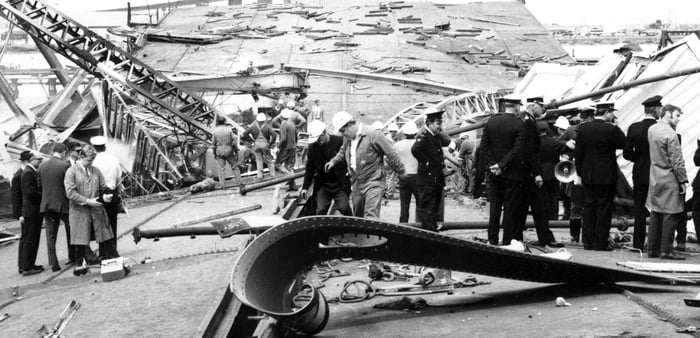 Australia's worst-ever industrial accident occurred when the West Gate Bridge collapsed into the Yarra River in Melbourne, killing 35 people
Australia's worst-ever industrial accident occurred when the West Gate Bridge collapsed into the Yarra River in Melbourne, killing 35 people
On 15 October 1970, the West Gate Bridge in Melbourne catastrophically collapsed during construction, resulting in the demise of 35 labourers and injuries to 18 others. The collapse was attributed to a failed span between piers 10 and 11, which plunged 50 meters to the ground and water beneath. On lunch break beneath the structure in workers' huts, numerous workers were crushed by the plummeting span. The following morning, Sir Henry Bolte (Premier of Victoria) declared that a Royal Commission would be immediately established to investigate the disaster's cause. Prime Minister John Gorton conveyed his condolences to the victims' families, recognising the nation's collective shock and sorrow. The catastrophe instigated a substantial revamp of Australia's bridge-building regulations, yielding enhanced safety measures and more stringent construction standards. The West Gate Bridge serves as a sombre reminder of the lives lost and the lessons gleaned from this tragic event.
As part of the pacification programme, 1ATF participated in Operation Cung Chung from June 1970 to February 1971. This operation comprised four phases, including intensive patrols and ambushes to deter enemy movement. Its primary objective was to curtail the Viet Cong's (VC) ability to operate within the region by denying them access to food supplies, taxes, and troop recruitment. Although the operation achieved its aims, the constant patrolling significantly taxed the troops.
In summary, 1970 imprinted an indelible mark on Australia, shaping its future considerably. It was a year of tumult and transformation, with protests against the Vietnam War, a disaster at Melbourne's West Gate Bridge, and crucial advancements such as the inauguration of a new international terminal at Sydney Airport. The year's events demonstrated the mounting opposition to the Vietnam War and marked a turning point in Australian history. The soldiers' efforts in Operation Cung Chung were crucial in limiting the VC's operations in the area and contributed to Australia's overall effort in the Vietnam War. The lessons learned from the West Gate Bridge disaster resulted in improved safety measures and stricter construction standards.
We hope you learnt something new from this blog. Please share it with your friends and family, and check out some of our previous blogs like The Impact of the Vietnam War on Australia in 1967 and From Bushfires to Moon Landing and Everything In Between of 1969! Our team extensively gets you stories from the Life and Times of the Vietnam War.
Music of 1970
This eclectic compilation of chart-topping tunes from 1970 reflects the era's diverse musical landscape and the significant events that shaped Australia during that year. From The Beatles' soulful "Let It Be" to the evocative "Bridge Over Troubled Water" by Simon and Garfunkel, these songs resonated with the public amidst social and political turbulence
|
No. |
Song Title |
Artist |
|
1. |
Let It Be |
The Beatles |
|
2. |
(They Long to Be) Close to You |
The Carpenters |
|
3. |
In The Summertime |
The Mixtures |
|
4. |
Spirit in the Sky |
Norman Greenbaum |
|
5. |
Bridge Over Troubled Water |
Simon and Garfunkel |
|
6. |
Lookin' Out My Back Door / Long As I Can See The Light |
Creedence Clearwater Revival |
|
7. |
El Cóndor Pasa |
Simon and Garfunkel |
|
8. |
Up Around the Bend / Run Through The Jungle |
Creedence Clearwater Revival |
|
9. |
Knock Knock, Who's There |
Liv Maessen |
|
10. |
Raindrops Keep Fallin' on My Head |
Johnny Farnham |
|
11. |
Whole Lotta Love |
Led Zeppelin |
|
12. |
Love Grows (Where My Rosemary Goes) |
Edison Lighthouse |
|
13. |
Cottonfields |
Beach Boys |
|
14. |
Travelin' Band / Who'll Stop The Rain |
Creedence Clearwater Revival |
|
15. |
The Wonder of You |
Elvis Presley |
Join the Conversation
We're helping Australians of all ages better understand the life and times of our Vietnam Veterans as we commemorate the end of Australia's involvement in the war 50 years ago. We're sharing interesting social bits and pieces from the Vietnam War era to give you a feel of the world back then, but most importantly we're sharing your memories, stories, and pride. Your memories of the Vietnam era; your family growing up in the 1960s and 70s; or stories you have about the life and times of your veteran dad, pop, uncle, or aunt will breathe life into their story. Share your pictures, anecdotes, and memories so others can see our veterans as more than soldiers. We honour, respect and admire, but few know. Help us honour our Veterans.




